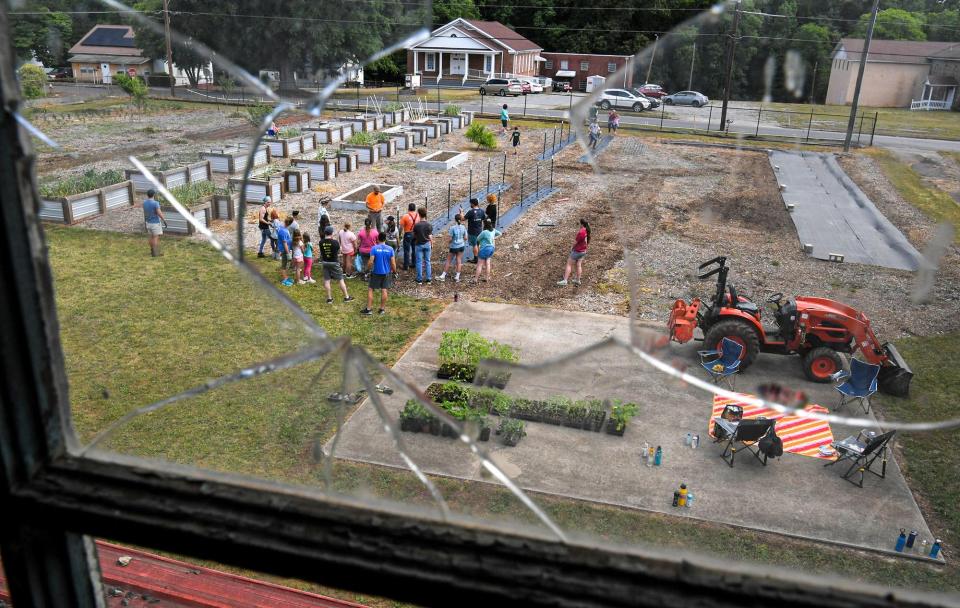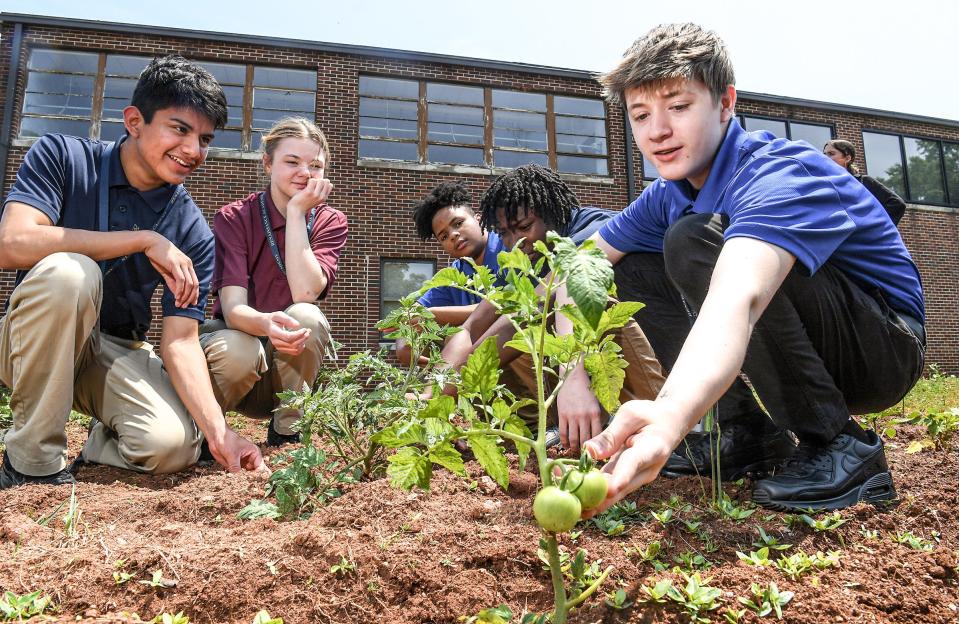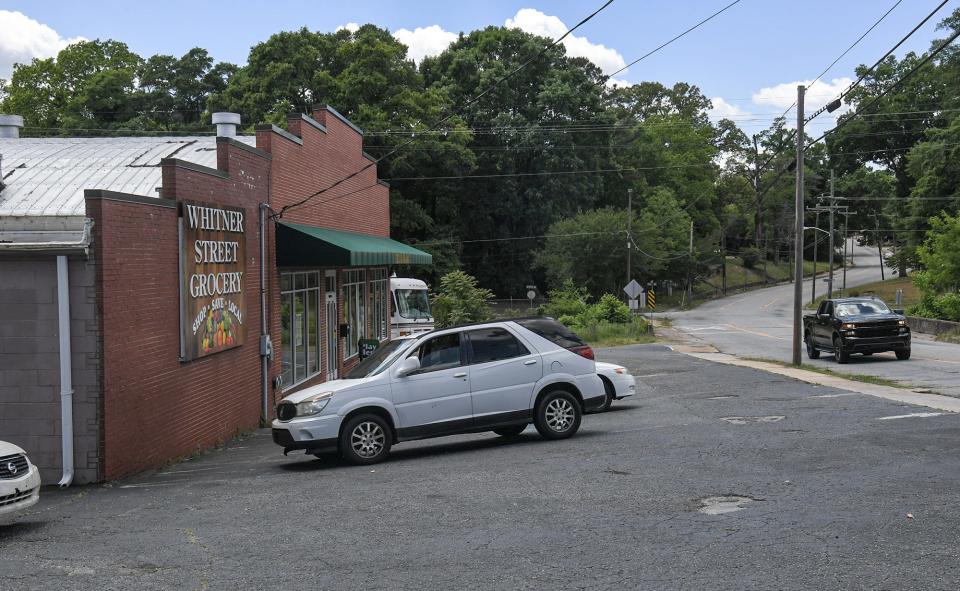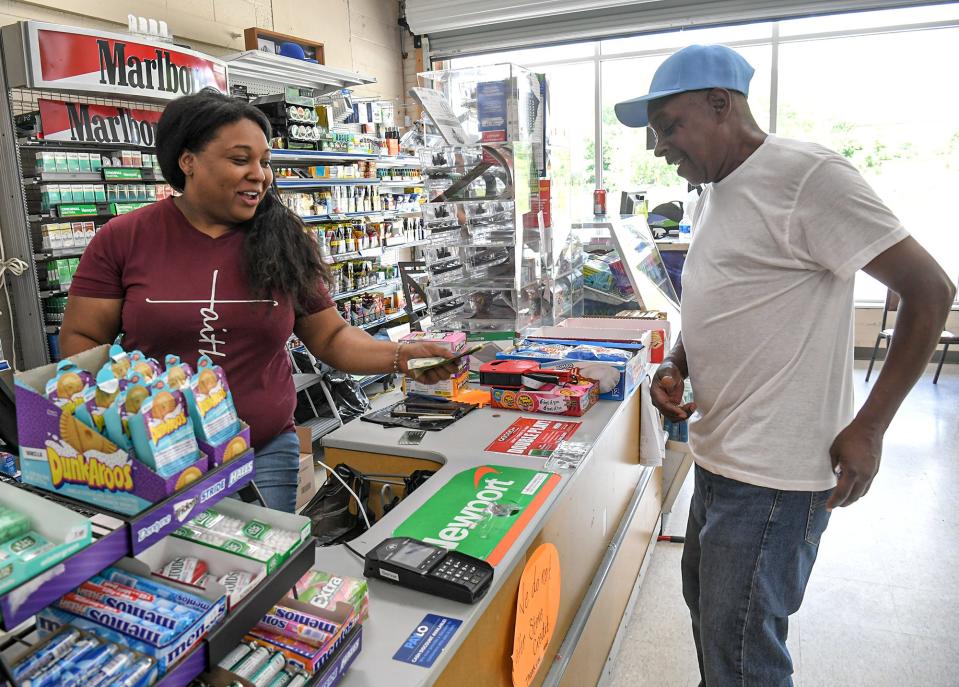'A big impact can be made with a garden': Raising nutrition awareness in city of Anderson
Zeph and Whitney Smith took a risk when they bought the crumbling East Whitner Street School, which operated from 1913 to 1981.
People had tried to renovate the school before, plans fell apart for decades as it sat unoccupied until the Smiths came up with an immediate way to use the space.
Instead of beginning the long costly process of renovating the decaying century-old school, they built a garden in the back.
The couple renamed the school the Cleo Bailey Experiment. It uses beds of melons and tomatillos as the first step to supporting a community in need of nutritional food resources.
"A big impact can be made with a garden," Zeph Smith said. "It's definitely a barren area for food."
And theirs is not the only garden around.
Public gardens are sprouting up in neighborhoods around the city of Anderson as surrounding communities confront the lack of fresh food accessibility and try to provide nutritional education.
More: Where to find food, gardening resources, nutritional health education in Anderson
More than providing food, providing community

A quarter-mile from the Cleo Bailey Experiment down East Whitner Street, between lines of students heading from the main building to a nearby portable, lies another gem at Renaissance Academy.
Rodney McCullough, an instructor there for 14 years, gestured toward a large rectangle plot of plowed dirt behind the school where the first vegetables of the summer were breaking through the moist soil, tomatoes.
"I think it makes a big difference, especially getting the young people involved," McCullough said. "Just giving the kids something to do in a positive manner, doing something and giving back to the community as well."
With help from Home Depot, the academy has been using the garden the past several years to teach students about growing food while giving one more reason for neighbors to stop in for a visit, he said.

A couple of miles westward, the LOT project operates two community gardens and is developing a third in the Alphabet Street neighborhoods.
Taylor Henry oversees the gardens and uses them as a tool for relationship building in neighborhoods that have seen some residential turnover lately.
"There's just got to be a lot of care," Henry said. "And we've got to think differently about food insecurity and not seeing it as external problem but more an internal and how they work together."
While the food in the gardens may not save someone from hunger — and other nonprofits focus on that — the gardens can be a conversation starter on what nutritional eating looks like, he said.

Henry has interacted with curious children from the surrounding homes making it a useful platform to teach them about growing their own squash or peas.
Kids that thought vegetables were gross have a new excitement when they watch the process of how they grow, he said.
Denise Gowans has lived in Anderson for 14 years and just recently moved in to a home on G Street. There is a Save A Lot a 5-minute drive away but it has limited options especially when it comes to fresh vegetables.
When Gowans is in other parts of Anderson, she said city neighborhoods like hers are unknown to many.
She'd like to see homes and sidewalks improved, a desire shared by her neighbor Dovie Morton.
Morton has lived in the same white house on G Street for 70 years after marrying her husband in 1950 and moving in a year later to the neighborhood originally designated for mill workers.

The gardens are a nice addition as long as residents know how to use them, she said. She saw some young children throwing tomatoes one day when she stopped to tell them the vegetables were for eating.
'You can actually change your life': The story behind Zimbe Dogs in Anderson
'The forgotten side of town'
The Alphabet Streets aren't the only neighborhoods in the city that need improvement. Neighborhoods along East Whitner Street have a similar story.
"Its sort of the forgotten side of town in a sense," Zeph Smith said, citing deteriorating sidewalks with weeds pushing through the cracks.
He mapped out what grocery stores with nutritional food are available and the closest store with fresh produce from the nonprofit is about a mile and a half west, Whitner Street Grocery.

Two Air Force veterans, Paul and Cindy Vernier, opened the store at the start of 2018 to relieve the food desert there.
"We saw this old building and the traffic that drove by and thought it would work well as a grocery," Cindy said back in 2018. "There was nothing for the residents of this area where variety and fresh food was concerned. We thought that needed to change."
The grocery store then was a scratch-and-dent style store featuring hundreds of name brands. And because they were scratch-and-dent products, they could often charge half the regular prices found in other stores.
Since their original ownership in 2018, the store has shifted ownership and changed products.

Michelle Hallums is the current owner and when she took over in August of 2021 the store had been selling bargain foods. She cut the shelves in half and is working to restock inventory after reopening in January after five months of the store being closed.
Everything in store is in-date, since in past years the store sold out-of-date items, she said.
"There's a lot of elderly customers in the neighborhood, they were spending tons of money trying to catch Ubers, they were even walking to Ingles and different places like that," she said, of the past couple years.
This store is her platform to help them, she said.
West Whitner Grocery is still in the process of adapting to the neighbor's needs as Hallums assesses which products sell best and she's also experimenting with items like thrifted clothes.
Cleo Bailey Experiment plans to expand into a center for support
For low-income city neighborhoods, a garden is a visual stamp using food and education with the bigger goal of bringing people together, Zeph Smith said.
It's practical and also sends a message.
The Smiths hope to develop the nonprofit into a center for classes and support in partnership with other organizations while focusing on growing the garden.

As a counsellor who grew up in Anderson, Whitney Smith has worked with East Whitner residents.
"A lot of the individuals I work with," she said, "have the will and the desire and motivation to work and improve their lives but just lack either the know how or the resources and support to do so."
That support can come in a variety of ways, like through rows of bell peppers and beds of blackberries.
United Way has also added 12 raised garden beds around the Eastside community to continue the message of visual nutritional stamps in the area.
At the end of the day, the bell peppers and zucchini budding through soil around the city are just one more excuse to come together to have a conversation.
"We have a vision that is ever evolving as we learn more about the needs of our community coupled with the talents of those in our community," Zeph Smith said. "One thing about this vision is steadfast though, all that we are doing here is done with the intent to serve."
Sarah Sheridan is the community reporter in Anderson. She'd appreciate your help telling important stories; reach her at ssheridan@gannett.com or on twitter @saralinasher.
This article originally appeared on Anderson Independent Mail: Anderson's Eastside a food desert, nonprofits, gardens hope to help

